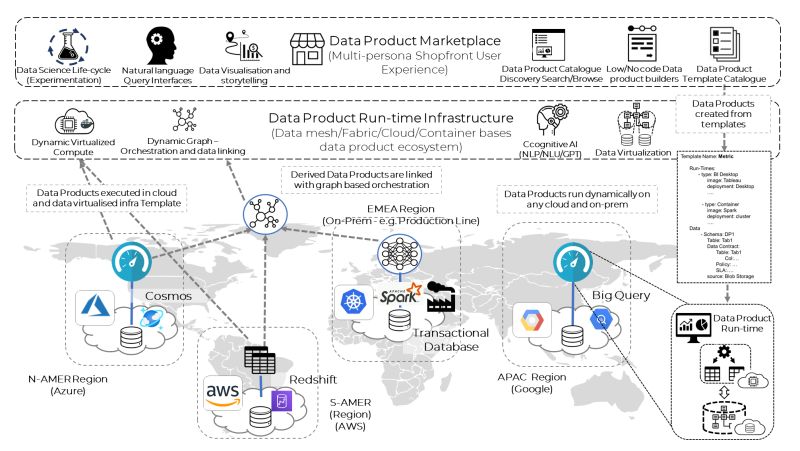In the rapidly evolving landscape of data platforms and infrastructure, the future lies in enabling anyone to build, run, and share data products using any technology, anywhere, on a decentralized unified marketplace infrastructure. This vision is not just aspirational; it’s a necessity for businesses to stay competitive and thrive, especially in volatile markets.

Key Aspects of Future-Proof Data Architecture
The architecture of tomorrow’s data platforms must incorporate several critical components to be truly effective:
1. Business-Facing Data Products
Data products should encompass more than just data; they should include models, metrics, and other business-critical elements. These products must run as separate process-based runtimes managed by different teams across the entire IT estate, not just as containers but adaptable to complex IT landscapes.
2. Dynamic Data Product Execution
Data products should be executed dynamically, without users needing to worry about the underlying infrastructure. Whether across multiple cloud providers or on-premises systems, the deployment should be cloud-native yet abstracted, ensuring seamless operation.
3. From Data Stacks to Data Ecosystems
Transitioning from modern data stacks to modern data ecosystems means embracing an integrated approach that combines various technologies and methodologies to create a cohesive environment for data management and analytics.
4. Full Self-Service, Low-Code Marketplace
A self-service, low-code marketplace should be available to all types of data developers, from analysts and scientists to tech-savvy business users and data engineers. This marketplace should facilitate experimentation, building, and iteration of data products with the business, eliminating lengthy intermediate steps.
5. Process Mapping with Data Products
Business processes should be mapped by strategically placing data products at various points and linking them using dynamic graphs and metadata-driven semantic approaches on raw data. This eliminates the need for centralized intermediate data modeling.
6. Data Virtualization
Data virtualization should enable access to any datastore, allowing relational data to be linked with zero copying. This approach empowers users to drive down costs and reduce time spent on data handling.
7. Library of Data Product Templates
Data products should be created from a library of templates, with definitions controlled by source code. These templates should embed data contracts, SLAs, policies, data quality measures, and more, ensuring comprehensive data governance.
8. Data Visualization and Storytelling
Advanced data visualization and storytelling capabilities should guide businesses on what actions to take and why, providing clear insights and directions.
9. Natural Language Interfaces
Natural language processing (NLP) and generative AI capabilities should be integrated to offer fast Q&A and augment data storytelling. This includes DL-based fact extraction and generative text summarization.
10. Cognitive AI Integration
Knowledge graphs and GPT-based capabilities should enhance natural language processing, understanding, and generation, presenting analytics storytelling in business-friendly language.
Facilitating the OODA Loop in Data Product Operating Models
This architecture supports a data product operating model where businesses can respond swiftly to market changes using the OODA loop (Observe, Orient, Decide, Act) principles:
- Observe: Measure critical points in the organization and market factors swiftly. Create and adapt information products to provide real-time metrics and models.
- Orient: Map out potential routes considering risks, costs, feasibility, and value. Use machine learning forecasting and graph analytics to visualize outcomes.
- Decide: Choose candidate routes based on planning and hypothesis testing. Prototype decision products and simulate scenarios to craft informed business strategies.
- Act: Execute business strategies, continually measuring impacts and iterating through the OODA loop for continuous improvement.
Conclusion
Transitioning to this decentralized, unified marketplace infrastructure enables organizations to develop business-focused data products rapidly and efficiently. This approach not only ensures agility and responsiveness in the market but also reduces the need for massive, costly transformation programs. Instead, companies can focus on building a robust, adaptable data product ecosystem that drives real business value. This is the future of being truly data-driven.
By embracing this vision, businesses can navigate the complexities of modern data landscapes and position themselves for success in an ever-changing market.

